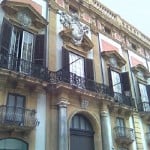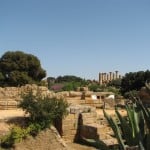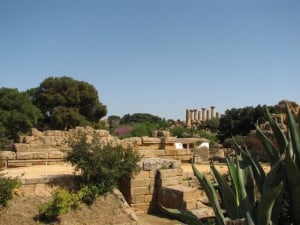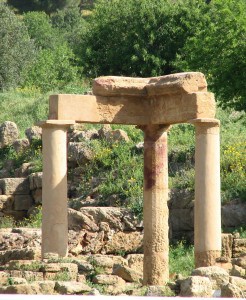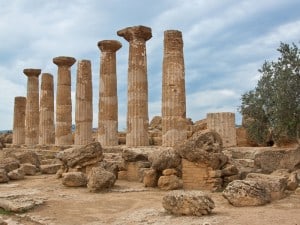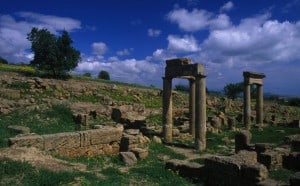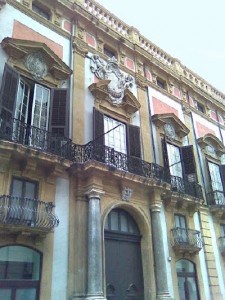 Whilst exploring Sicily recently, Sharon Preston discovered some magnificent castles. The Palazzo Trigona was her favourite
Whilst exploring Sicily recently, Sharon Preston discovered some magnificent castles. The Palazzo Trigona was her favourite
One of the highlights of my visit to Sicily was visiting the ancient Palazzo Trigona, located in Piazza Armerina, also known as Piazza Duomo, because this is where the town’s cathedral is located. The Trigona family, who built the palace as their home, chose this location, because they were also responsible for building much of the Duomo themselves. In fact, there’s a statue of the member of the Trigona family who built the Duomo in the centre of the square. Aside from the castle you’ll also find an art gallery in the square that boasts some paintings by famous artists including Caravagggio, Carlo Dolic, Faggini and Canaletto. It’s well worth exploring once you’ve finished exploring the castle.
The castle, which was built between the 18th and 19th Centuries, has recently been restored to its former glory and is now used as an hotel. The hotel offers a choice of 13 rooms and two suites and its guests include people from all over the world who come to stay here, to relax and step back in time to a more glamorous, elegant era.
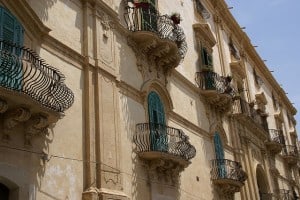 Palazzo Trigona is located less than a kilometer from the town’s famous archaeological sites, so it’s the ideal base from which to explore. The hotel’s public areas are particularly beautiful, and we explored those at leisure, including a living room with a fireplace and a small library. I think that next time I visit Sicily I’d like to escape the busy tourist sights on the island and stay in this beautiful old palace. It would be the perfect place to get away from it all in old-world surrounds.
Palazzo Trigona is located less than a kilometer from the town’s famous archaeological sites, so it’s the ideal base from which to explore. The hotel’s public areas are particularly beautiful, and we explored those at leisure, including a living room with a fireplace and a small library. I think that next time I visit Sicily I’d like to escape the busy tourist sights on the island and stay in this beautiful old palace. It would be the perfect place to get away from it all in old-world surrounds.
The setting is quite magnificent, with lots of lush trees around the building and although we did spend time exploring the grounds, I would love to come and stay there and be able to enjoy many leisurely walks discovering the magic of the surroundings as well as enjoying some horse riding and mountain climbing.
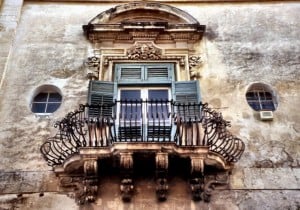 The main façade of the palazzo is quite spectacular, with a series of large windows and the balcony above them. It’s an excellent example of 18th Century architecture. And if you are lucky and the hotel is not fully booked, you may be able to explore some of the hotel rooms as well as the public areas. That would give you an idea of how much fun it would be to stay at such a stunning hotel.
The main façade of the palazzo is quite spectacular, with a series of large windows and the balcony above them. It’s an excellent example of 18th Century architecture. And if you are lucky and the hotel is not fully booked, you may be able to explore some of the hotel rooms as well as the public areas. That would give you an idea of how much fun it would be to stay at such a stunning hotel.
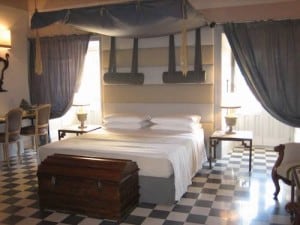 And if you do book a room there, perhaps I’ll see you there next summer, when I enjoy the luxury of staying in a famous ancient palace in the heart of Sicily. I can imagine no better way to enjoy la dolca vita.
And if you do book a room there, perhaps I’ll see you there next summer, when I enjoy the luxury of staying in a famous ancient palace in the heart of Sicily. I can imagine no better way to enjoy la dolca vita.

